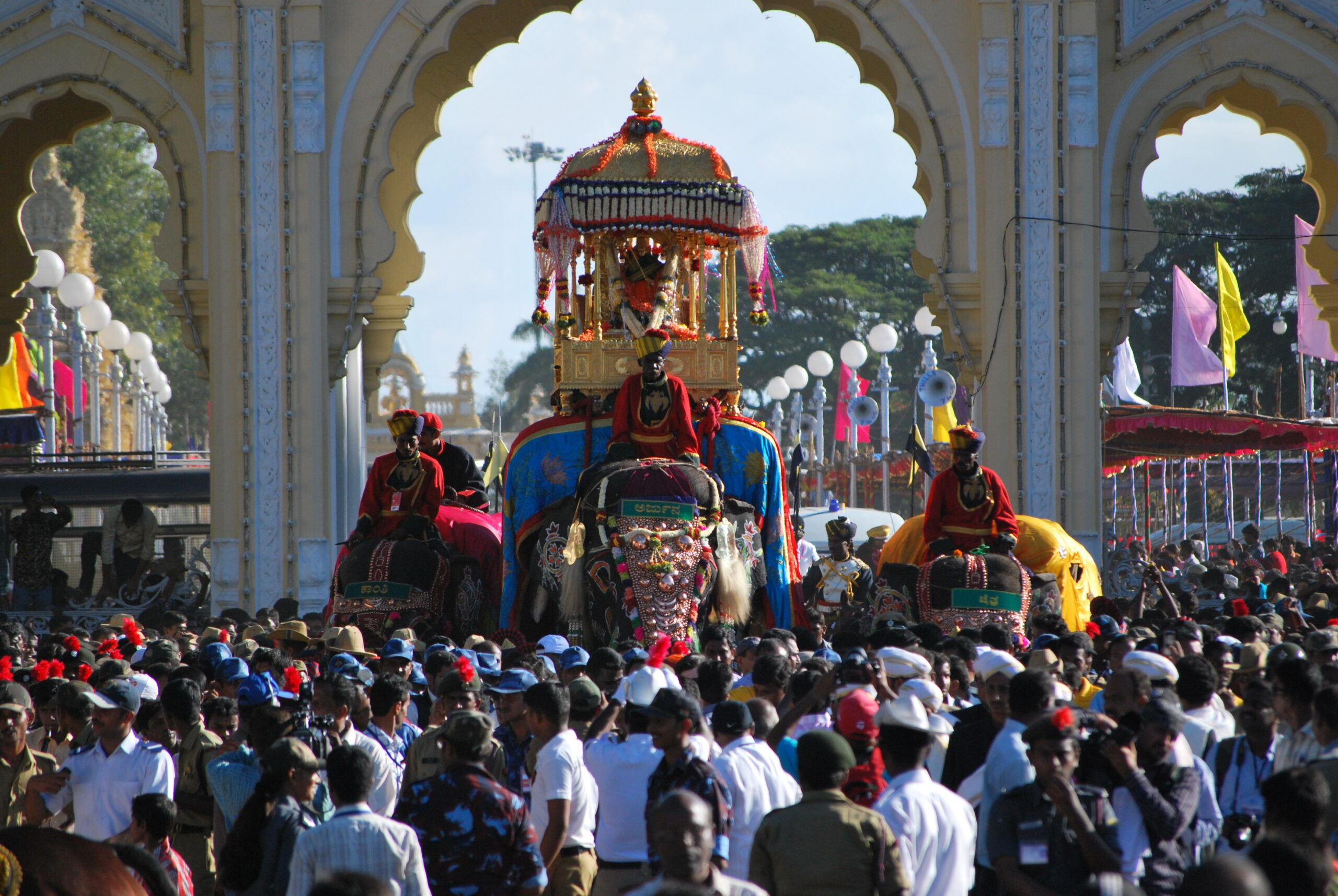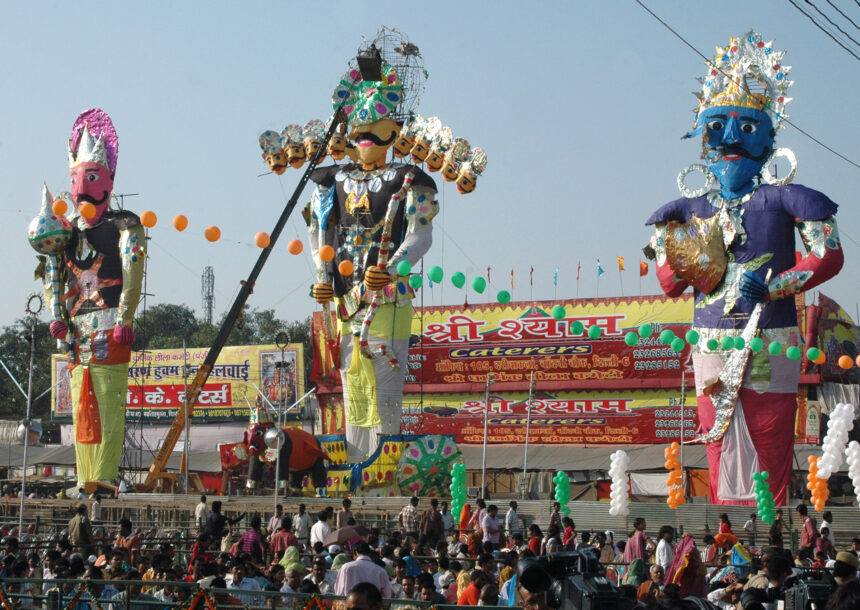Vijayadashami: Celebrating Triumph and Tradition in Hindu Culture
Understanding Vijayadashami Traditions
Welcome to our exploration of Dussehra, also known as Vijayadashami, a festival that marks a significant moment in Hindu culture—the victory of Lord Rama over the demon king Ravana. Celebrated on the tenth day of the Hindu lunar month of Ashwin, Dussehra symbolizes the triumph of good over evil, a theme that resonates deeply within the hearts of millions around the world.
This festival is not just a time for joyous celebrations but also a profound reflection on the lessons embedded within the ancient epic, the Ramayana. As we delve into the rituals, stories, and modern relevance of Dussehra, we invite you to join us in discovering how this age-old festival continues to foster community spirit, uphold moral values, and inspire personal and collective growth in contemporary times.
Join us as we explore the rich tapestry of history, tradition, and spiritual enlightenment that Dussehra weaves, helping us to reconnect with our roots and celebrate the enduring power of virtue. Whether you are familiar with the festival or experiencing it for the first time through this post, we hope to offer insights that enrich your understanding and appreciation of this pivotal celebration in Hindu culture.
Historical Significance
Vijayadashami, also widely recognized as Dussehra, is deeply rooted in the epic narrative of the Ramayana, which details the heroic deeds of Lord Rama, his faithful companion Lakshman, his devoted wife Sita, and his ardent devotee Hanuman. This ancient story reaches its climax in a fierce battle between Lord Rama and the demon king Ravana, who had deceitfully abducted Sita. The battle ends with Rama’s decisive victory over Ravana, marking the triumph of virtue and righteousness. This victory is commemorated during Vijayadashami, symbolizing the defeat of evil by good, and the reinstatement of Dharma (righteous conduct). The celebration of Vijayadashami thus serves as a powerful reminder of the significance of righteousness and the enduring power of ethical and moral values over wrongdoing.
Rituals and Celebrations
Hindu festivals play a crucial role in the cultural and spiritual life of adherents, serving as vivid reminders of the religion’s rich heritage and profound teachings. These festivals are deeply rooted in the texts of the Vedas, which are the core source of Hindu knowledge. Each celebration is steeped in Vedic rituals and chants, allowing participants to actively engage with and recall the ancient wisdom that guides their daily lives and ethical choices.
These myriad celebrations not only help individuals stay connected to these sacred texts but also provide a structured rhythm to life that breaks the monotony of daily routines. This is in contrast to some modern forms of leisure, which may not contribute positively to community cohesion or personal growth. By commemorating various deities, historical figures, and events, Hindu festivals serve as conduits to the past, bringing timeless Vedic principles to the present and ensuring their continuation into the future.
Returning to Vijayadashmi, the rituals and celebrations of Vijayadashami are vivid and filled with deep cultural significance, mirroring the epic battle and victory of Lord Rama. Across various parts of India, enormous effigies of Ravana, along with his brothers Meghnath and Kumbhakarna, are crafted and dramatically burned. This act symbolizes the burning away of evil and the cleansing of the spirit within, which is central to the essence of Vijayadashami. Additionally, the staging of Ramlila—where the life of Rama is portrayed in a series of dramatic performances—plays a pivotal role in the festivities. These performances culminate on Vijayadashami, drawing vast crowds who gather to witness the destruction of Ravana and to celebrate the victory of good over evil. This traditional re-enactment entertains as also it imparts moral and spiritual lessons, reinforcing the cultural richness of the Vijayadashami celebrations.
Regional Celebrations and Famous Places for Celebrations
Vijayadashami, or Dussehra, is celebrated with diverse customs and grandeur across different regions of India, each adding a unique flavor to the festivities. In Northern India, cities like Varanasi and Delhi host lavish fairs and parades, attracting thousands of participants. The air is filled with the vibrant sights and sounds of elaborately decorated floats and performances that narrate scenes from the Ramayana. These events provide a communal space for celebration and a reconnection with cultural heritage.
Moving to Southern India, the festival takes on a slightly different character with the celebration of Saraswati Puja and Ayudha Puja. These rituals involve the worship of Saraswati, the goddess of knowledge, and the veneration of tools and books. It’s a time when students and professionals alike pay homage to their instruments of trade and learning, seeking blessings for success and prosperity in their endeavors.

Symbolism and Spiritual Lessons
The celebration of Vijayadashami is replete with symbolic meanings that transcend the festivities, offering deep spiritual lessons. This festival serves as a profound reflection on the moral and ethical values upheld by society. It emphasizes the importance of courage, self-discipline, and the eradication of negative tendencies, promoting a message of moral rectitude and the power of righteousness.
Dussehra especially underscores the virtues of patience, bravery, and morality, reminding individuals that these qualities are essential for overcoming adversity and evil. The burning of Ravana’s effigy acts as a metaphor for the destruction of bad habits and harmful desires, encouraging a communal spirit of renewal and purification. As such, Vijayadashami is not just a historical celebration but a time for personal and collective introspection, emphasizing that good always prevails over evil, despite the challenges that may arise.
International Celebrations
Vijayadashami, universally known as Dussehra, is a festival that transcends geographical boundaries, celebrated with zeal in countries around the world with significant Hindu populations. In Nepal, Dussehra is part of the Dashain festival, the country’s longest and most notable festival. Here, it involves special pujas, offerings, and the receiving of Tika and Jamara from elders, which are seen as blessings of the deities for health and prosperity.
In Sri Lanka, where the Ramayana’s antagonist Ravana is believed to have ruled, Dussehra involves unique rituals that reflect the local folktales and interpretations of the epic. The festival is marked by religious activities that underscore the spiritual messages of the Ramayana, connecting deeply with local traditions and folklore.
Among the Hindu diaspora in the United States, the United Kingdom, and Canada, Dushehra is celebrated with community gatherings, cultural programs, and public renditions of the Ramlila. Temples and community centers become hubs of activity, bringing together people of all ages to reflect on the values depicted in the Ramayana and to participate in the communal spirit of the festival. These celebrations often incorporate educational components about the cultural and spiritual significance of Dussehra, aimed at educating younger generations and sharing the festival’s joy and teachings with broader, multicultural communities.
Rituals and Celebrations
Hindu festivals play a crucial role in the cultural and spiritual life of adherents, serving as vivid reminders of the religion’s rich heritage and profound teachings. These festivals are deeply rooted in the texts of the Vedas, which are the core source of Hindu knowledge. Each celebration is steeped in Vedic rituals and chants, allowing participants to actively engage with and recall the ancient wisdom that guides their daily lives and ethical choices.
As we celebrate Vijayadashami, it’s essential to acknowledge the environmental impact of our festivities. The traditional burning of Ravana’s effigy, while symbolizing the destruction of evil, releases harmful pollutants into the air. This highlights the need for sustainable practices in our celebrations, ensuring that our reverence for tradition does not come at the expense of the environment. By adopting eco-friendly alternatives, such as using natural materials for effigies and reducing fireworks, we can minimize our ecological footprint while preserving the cultural significance of Vijayadashami.
In today’s fast-paced world, Vijayadashami retains its modern relevance by serving as a powerful reminder of the importance of righteousness and moral integrity. The festival offers a valuable opportunity for individuals from diverse backgrounds to come together, celebrate shared traditions, and engage in reflection on universal themes of virtue over vice. By reenacting the epic tale of Lord Rama and celebrating his victory, Vijayadashami allows people to reconnect with cultural roots and collective values that might otherwise be overshadowed in everyday routines.
Environmental Concerns
The traditional celebrations of Dussehra, while culturally significant, pose environmental concerns, particularly with the burning of large effigies and the use of fireworks. These practices contribute to air pollution and generate considerable waste, impacting both local air quality and broader environmental health. The symbolic burning of effigies, meant to represent the destruction of evil, releases harmful pollutants into the air, including smoke and chemicals from the materials used in effigy construction and fireworks.
In response to these environmental challenges, many communities, both in India and abroad, are adopting more sustainable practices. These include using eco-friendly materials for effigies, such as paper and natural dyes, and reducing the size of the effigies to minimize burn volume. Some localities have begun using laser shows and light-based effects to replicate the visual spectacle of fireworks while avoiding the associated air pollution.
Additionally, efforts are being made to raise awareness about the environmental impact of festival practices, encouraging participants to consider alternative, less harmful ways to celebrate. This includes community drives for cleaner celebrations and more responsible disposal of post-festival waste, ensuring that the spiritual celebration of Dussehra does not come at the expense of the environment. These initiatives represent a growing consciousness about integrating traditional festivities with modern environmental considerations, aiming to preserve the essence of Dussehra while fostering a sustainable future.
Modern Relevance
In the fast-paced modern world, Dussehra retains a pivotal role, serving not only as a custodian of rich cultural heritage and traditional values but also as a powerful unifier of diverse communities. The festival offers a valuable opportunity for individuals from various backgrounds to come together, celebrate shared traditions, and engage in reflection on universal themes of virtue over vice. Dushehra emphasizes the importance of righteousness and moral integrity, principles that remain as relevant today as they were in the times of the Ramayana.
By reenacting the epic tale of Lord Rama and celebrating his victory, Dushehra allows people to reconnect with cultural roots and collective values that might otherwise be overshadowed in everyday routines. This connection is cultivated through various activities that include theatrical performances, ritualistic practices, and community gatherings, which reinforce social bonds and enhance community spirit. For many, it is a time to pause and reflect on personal and communal ethics, fostering a sense of belonging and togetherness that transcends cultural and geographic boundaries.
Reflections on Vijayadashami Celebrations
Vijayadashami, or Dushehra, stands as a beacon of cultural and spiritual significance, embodying more than just the symbolic victory of good over evil. It is a festival that reaffirms the moral values and societal unity fundamental to human coexistence and harmony. Each year, as effigies of Ravana burn, they ignite a collective resolve to pursue righteousness and justice in our own lives and communities.
As we participate in and observe the rich traditions of Dushehra, let us draw inspiration to embody the virtues of patience, bravery, and morality. Let this festival motivate each of us to dispel the darkness of ignorance and selfishness with the light of wisdom and compassion. Let Dushehra inspire us to uphold these virtues daily, striving towards a just and righteous society. Celebrating Dushehra is not only about remembering a historic event but is an active, living practice of reinforcing the values that define and enrich our lives together.
Feature Image: Click here to view the image. [Credit https://flickr.com]
Visit our YouTube Channel by clicking here.
Follow us on our social median handles
Glossary of Terms:
- Vijayadashami: Also known as Dussehra, it is a major Hindu festival celebrated at the end of Navaratri every year. It marks the victory of Lord Rama over the demon king Ravana and symbolizes the triumph of good over evil.
- Ramayana: An ancient Indian epic narrating the life and adventures of Lord Rama. It is one of the two major Sanskrit epics of ancient Indian literature, the other being the Mahabharata.
- Ravana: The demon king of Lanka in the Hindu epic Ramayana, known for his ten heads and extraordinary powers. He is the primary antagonist who kidnaps Sita, leading to the epic battle with Lord Rama.
- Dharma: A key concept in Indian philosophy and religion that signifies behaviors that are considered to be in accord with the order that makes life and universe possible. It includes duties, rights, laws, conduct, virtues, and ‘‘right way of living’’.
- Effigies: Statues or models of a person. During Dussehra, effigies of Ravana, Kumbhakarna, and Meghanada are burnt as a part of the celebrations to symbolize the destruction of evil.
- Ramlila: A dramatic folk re-enactment of the life of Lord Rama, ending up in ten-day battles fought between Lord Rama and Ravana, as described in the Ramayana.
- Saraswati Puja and Ayudha Puja: Part of the Dussehra festival in some regions of India where people worship Saraswati, the goddess of knowledge, and Ayudha, the tools of one’s livelihood.
- Mysore Dasara: A royal festival celebrating Dussehra in Mysore, India, known for its elaborate processions and cultural richness.
- Howdah: A seat generally used on the back of an elephant for carrying important persons. In many Indian festivals, deities are paraded on elephants in howdahs.
- Tika and Jamara: Used in Nepalese culture during the Vijayadashami celebrations. Tika is a mark made on the forehead, and Jamara are sacred grass shoots given as tokens of Durga’s blessing.
Top Searched #Tags Related to the Topic: #Vijayadashami #Dussehra2023 #Ramayana #HinduFestivals #IndianCulture



Leave a Reply